View in other NatureServe Network Field Guides
NatureServe
Montana
Utah
Wyoming
Idaho
Wisconsin
British Columbia
South Carolina
Yukon
California
New York
A Cave Obligate Isopod - Salmasellus steganothrix
State Rank Reason (see State Rank above)
This Subterranean Cave Obligate Isopod is currently listed as "S1S2" in MT due to extremely limited and/or rapidly declining population numbers, range and/or habitat, making it highly vulnerable to global extinction or extirpation in the state. These subterranean isopods are generally endemic to only a few locations; this one having only been reported in Montana from Algal Cave in Glacier National Park, and the subterranean alluvial floodplain between the Flathead and Whitefish rivers in the Kalispell Valley, both in Flathead County.
General Description
[From Bowman 1975; Clifford and Bergstrom 1976; Holsinger et al. 1983; Lewis 2001]
Genus Salmasellus: Body elongate. Pereonites nearly uniform in width. Telson not elongate. Mandibular palp 3-merous. Maxilla 1 inner lobe with 5 apical setae. Male pereopod 1 propus long and slender; palm withut bosses, armed with row of strong spines. Dactyls of pereopods 2-7 without accessory spines. Endopod of male pleopod 2 without basal or labial spurs; lateral margin with long setae arising from inflated base and fitting into groove along margin. Exopod of male pleopod 2 without catch-lobe. Pleopod 3 exopod with tansverse suture.
Salmasellus steganothrix: To about 9.5 mm in length; lacking eyes; lacking pigment (white). Body slender, about 3.8 X as long as wide; pereonites increasing gradually in width to pereonite 6, pereonite 7 slightly narrower. Coxae all visible in dorsal view. Margins of head, pereonites, and telson moderately spinose. Head about 2.0 X as wide as long, anterior margin with distinct rostrum, post mandibular lobes prominent; mandibles with 4-cuspate lacinia mobilis, incisor on left 5-cuspate, on right 4-cuspate; maxilla 1 inner lobe usually with 5 apical setae. Antenna 1 about as long as width of head, flagellum of 4-5 segments; antennae 2 about as long as body. Telson slightly wider than long, lateral margins convex, caudomedial lobe well defined. First pereopod with elongate unarmed propus about 3.2 X as long as wide, palmer margin with about 8 spines; pleopod 3 exopod with sparse setae on lateral margin of proximal segment. Endopod very large relative to exopod, with long spine-like processes appearing to support distal part of endopod.
Phenology
Probably active throughout the year. None in monthly samples during December to May in Alberta (Clifford and Bergstrom 1976), but collected in April elsewhere in Alberta (Holsinger et al. 1983) and reported in February surveys in Montana (Bodenhamer 2011). Both sexes in samples collected in April, June, July, August, late September (6.0-9.5 mm length); ovigerous females (about 7.0-7.1 mm length) in April and early September; immatures (4.2-6.3 mm length) in June, July, September; very small recently-released individuals (2.0-3.0 mm length) in September and November. Possibly univoltine, with reproduction during summer and old generation dying by late summer or early autumn (Clifford and Bergstrom 1976; Campbell et al. 1978; Holsinger et al. 1983; Hendricks 2000; Lewis 2001; Bodenhamer 2011).
Diagnostic Characteristics
Unique in Montana; the only subterranean isopod known to occur in the state. Lack of pigmentation and eyes separates Salmasellus steganothrix from other aquatic isopods in Montana. Differs from the other member in the genus (S. howarthi) in range (the latter species occurs only in the Cascades of southwestern Washington state) as well as morphology (Lewis 2001). S. steganothrix differs by the propus of male pleopod 1 more elongate (3.2 X as long as wide, vs. 2.7 X), palmar margin with about 8 spines (instead of about 3), the mandibles with 4-cuspate lacinia mobilis (not 3-cuspate), left incisor 5-cuspate (not 4-cuspate), maxilla 1 inner lobe typically with 5 apical setae (insted of 6-7), pleopod 3 exopod with sparse setae on lateral margin of proximal segment.
Species Range
Montana Range
Range Descriptions
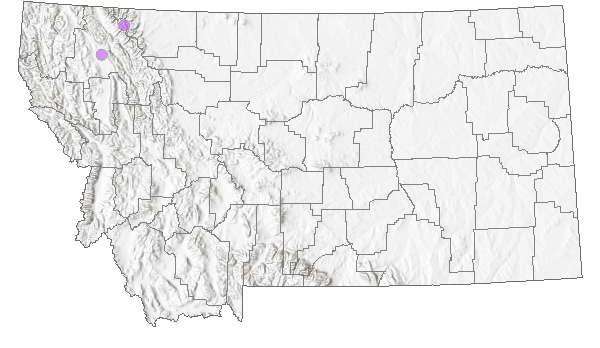
 Native
Native
Range Comments
Reported only from the northern Rocky Mountains of Alberta and Montana (Peck 1998; Lewis 2001). Specific localities include Horseshoe Lake, Cadomin Cave, and Castleguard Cave in Alberta (Bowman 1975; Clifford and Bergstrom 1976; Holsinger et al. 1983) at 1230 m to about 2000 m elevation; Algal Cave in Glacier National Park and the alluvial floodplain aquifer of the Flathead River system in the Kalispell Valley, Flathead County, Montana (Campbell et al. 1978; Chester 1978; Ward et al. 1994; Hendricks 2000, Bodenhamer 2011), at about 900 m to 1225 m elevation. The report from Deadhorse Cave, Skamania County, Washington (Holsinger et al. 1983) no longer applies to this species but to Salmasellus howarthi (Lewis 2001).
Observations in Montana Natural Heritage Program Database
Number of Observations: 3
(Click on the following maps and charts to see full sized version)
Map Help and Descriptions
Relative Density

Recency
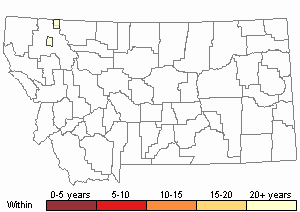
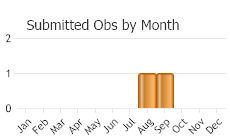
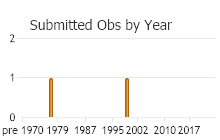
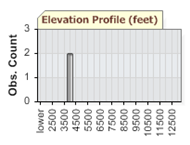 (Observations spanning multiple months or years are excluded from time charts)
(Observations spanning multiple months or years are excluded from time charts)
Migration
Not described. Likely moves through hyporheic groundwater systems at depths to at least 10 m (Ward et al. 1994). Appears in ephemeral pools in caves when connected by flowing surface water (Hendricks 2000; Bodenhamer 2011).
Habitat
Aquatic subterranean and hyporheic habitats: caves, springs, water wells, floodplain aquifers, alluvial river systems (Bowman 1975; Clifford and Bergstrom 1976; Holsinger et al. 1983; Ward et al. 1994; Lewis 2001); on substrate surface in cave pools, undersides of flat rocks in surface water, at water temperatures of 4-9 C (Clifford and Bergstrom 1976; Campbell 1978; Holsinger et al. 1983; Ward et al. 1994; Hendricks 2000; Bodenhamer 2011).
Food Habits
Not described.
Reproductive Characteristics
Limited information. Adults reported June-September (probably February-November), ovigerous females April-September, immatures of various sizes June-November (Clifford and Bergstrom 1976; Campbell et al. 1978; Holsinger et al. 1983; Hendricks 2000, unpublished data; Lewis 2001; Bodenhamer 2011).
Stewardship Responsibility
References
- Literature Cited AboveLegend:
 View Online Publication
View Online Publication Bodenhamer, H. 2011. Bait box survey of aquatic cave invertebrates for four caves in Glacier National Park, Montana. Big Fork, MT: Big Fork High School Cave Club. 33 p.
Bodenhamer, H. 2011. Bait box survey of aquatic cave invertebrates for four caves in Glacier National Park, Montana. Big Fork, MT: Big Fork High School Cave Club. 33 p. Bowman, Thomas E. 1975. Three new troglobitic asellids from western North America (Crustacea: Isopoda: Asellidae). International Journal of Speneology. 7: 339-56.
Bowman, Thomas E. 1975. Three new troglobitic asellids from western North America (Crustacea: Isopoda: Asellidae). International Journal of Speneology. 7: 339-56. Campbell, N. P., J. Chester, and R. Zuber. 1977. Glacier Park cave study, part III. August 1977. Unpublished report to Glacier National Park. 32 pp.
Campbell, N. P., J. Chester, and R. Zuber. 1977. Glacier Park cave study, part III. August 1977. Unpublished report to Glacier National Park. 32 pp. Chester, J. 1978. New species! Alpine Karst 4:63-64.
Chester, J. 1978. New species! Alpine Karst 4:63-64. Clifford, H. F., and G. Bergstrom. 1976. The blind aquatic isopod Salmasellus from a cave spring of the Rocky Mountains' eastern slopes, with comments on a Wisconsin Belgium. Canadian Journal of Zoology 54:2028-2032.
Clifford, H. F., and G. Bergstrom. 1976. The blind aquatic isopod Salmasellus from a cave spring of the Rocky Mountains' eastern slopes, with comments on a Wisconsin Belgium. Canadian Journal of Zoology 54:2028-2032. Hendricks, P. 2000. Preliminary results of an inventory of Algal Cave, Glacier National Park, Montana, for aquatic cave invertebrates. Montana Natural Heritage Program, Helena, MT. 4pp.
Hendricks, P. 2000. Preliminary results of an inventory of Algal Cave, Glacier National Park, Montana, for aquatic cave invertebrates. Montana Natural Heritage Program, Helena, MT. 4pp. Holsinger, J.R., J.S. Mort, and A.D. Recklies. 1983. The subterranean crustacean fauna of Castleguard Cave, Columbia Icefields, Alberta, Canada, and its zoogeographical significance. Arctic and Alpine Research. 15:543-549.
Holsinger, J.R., J.S. Mort, and A.D. Recklies. 1983. The subterranean crustacean fauna of Castleguard Cave, Columbia Icefields, Alberta, Canada, and its zoogeographical significance. Arctic and Alpine Research. 15:543-549. Lewis, J.J. 2001. Three new species of subterranean Asellids from western North America, with a synopsis of the species of the region (Crustacea: Isopoda: Asellidae). Texas Memorial Museum, Speleological Monographs, 5:1-15.
Lewis, J.J. 2001. Three new species of subterranean Asellids from western North America, with a synopsis of the species of the region (Crustacea: Isopoda: Asellidae). Texas Memorial Museum, Speleological Monographs, 5:1-15. Peck, S.B. 1998. A summary of diversity and distribution of the obligate cave-inhabiting faunas of the United States and Canada. Journal of Cave and Karst Studies 60:18-26.
Peck, S.B. 1998. A summary of diversity and distribution of the obligate cave-inhabiting faunas of the United States and Canada. Journal of Cave and Karst Studies 60:18-26. Ward, JV, JA Stanford, and NJ Voelz. 1994. Spatial distribution patterns of Crustacea in the floodplain aquifer of an alluvial river. Hydrobiologia. 287:11-17
Ward, JV, JA Stanford, and NJ Voelz. 1994. Spatial distribution patterns of Crustacea in the floodplain aquifer of an alluvial river. Hydrobiologia. 287:11-17
- Web Search Engines for Articles on "A Cave Obligate Isopod"
- Additional Sources of Information Related to "Crayfish / Amphipods / Pill Bugs"





